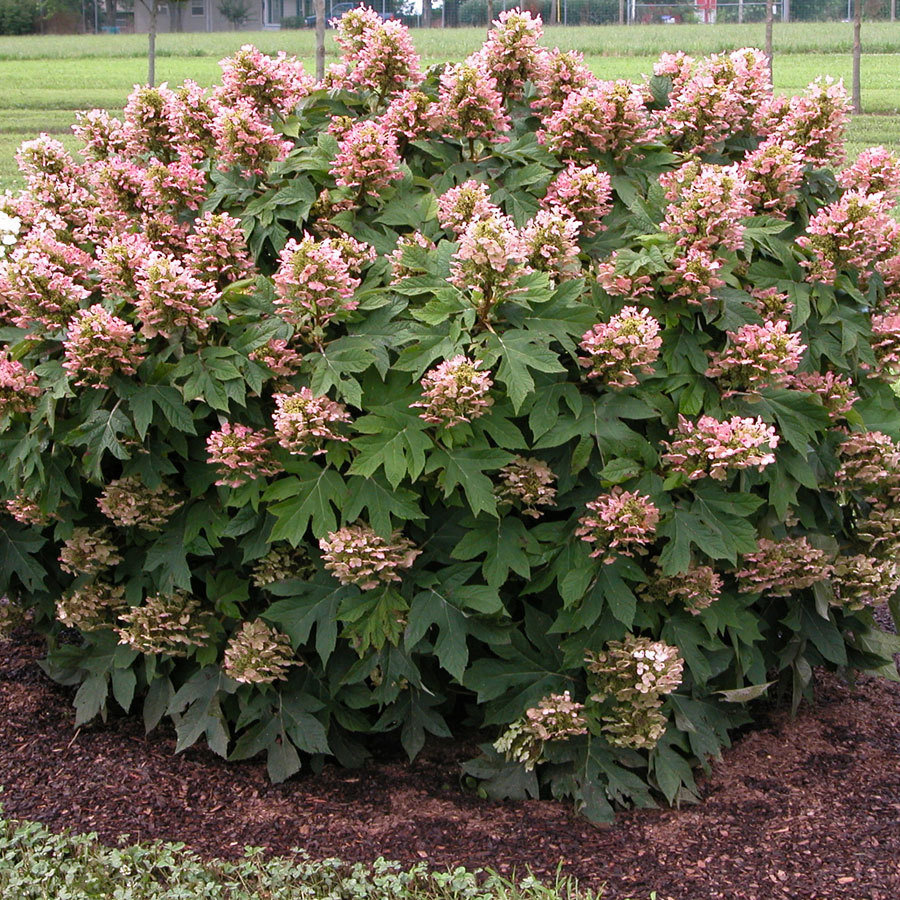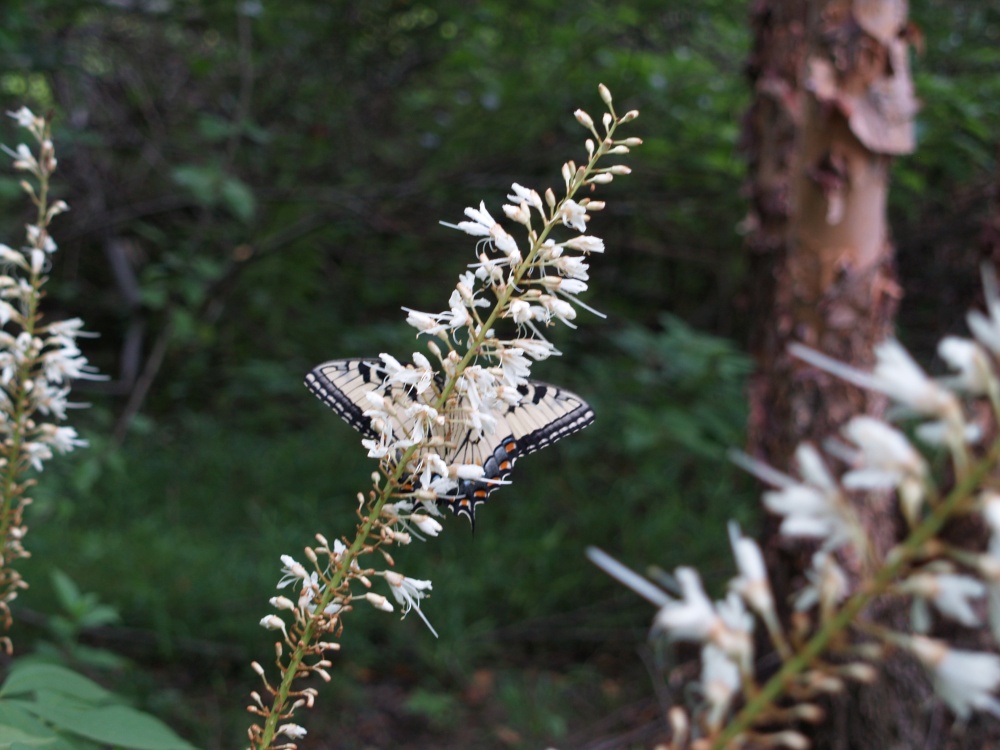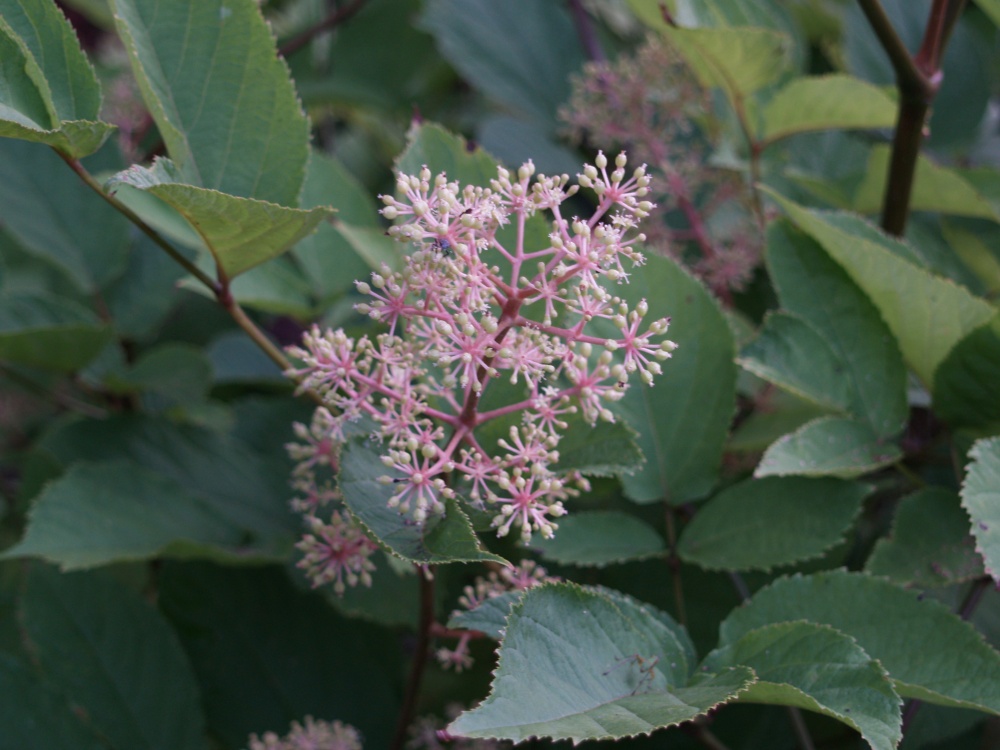The stone path beneath the serviceberry (Amelanchier canadensis) is littered with a carpet of brown leaves. The neighbors ask if their trees are dying, but this is only a reaction to last week’s sudden heat wave. In summer, many trees drop at least a few leaves due to heat and dryness, and some, such as the native River birch (Betula nigra), drop substantial numbers. This year, with abundant rainfall and cooler than average temperatures it’s unsurprising to see trees drop so much foliage, and this should not be a concern.
I’ve reported that several butterfly bushes (Buddleia) have recently failed in the waterlogged soil that borders the lower garden, and I fear that two hydrangeas are also in danger. Hydrangeas will tolerate wet soils, but not for extended periods, and unfortunately, the end of this rainy weather is not in sight. Still, I am confident that a recently acquired ‘Munchkin’ Oakleaf hydrangea (Hydrangea quericfolia ‘Munchkin’, above) will manage well in the spot soon to be vacated by the ‘Miss Ruby’ butterfly bush. I only need to dig out the dead buddleia and plant the hydrangea before it dies on the driveway.
A Chaste tree (Vitex agnus-castus, above and below) sits just above the wettest area, and it shows no ill effect from the wetness. Other shrubs are planted at the edges, and in standing water, but these were selected for their tolerance, while the Chaste tree was not. I’ve seen Vitex pruned to a single trunk, but most often it is a multi-branched large shrub. This is planted in an area that is perhaps a bit too shaded, so that it flowers two weeks later than others, but it seems not to mind the lack of sun or the damp soil. 
For several weeks in July when it’s blooming this is a splendid shrub, regularly visited by bees and butterflies, and even after flowering it is appreciated for its deeply divided leaves. At some point the Chaste tree will grow too large for this spot, but I was determined to fit it in somewhere, and with a bit of pruning it will work just fine.
At the low end of the wet swale that borders the garden a seedling of Bottlebrush buckeye (Aesculus parviflora, above) grows under the overhanging branches of a River birch. This treasure appeared several years ago, sprouting in the muck, and now it has grown to a low, wide spreading shrub. Unfortunately, it is difficult to reach through the mud, made worse by deer that have worn a path through this area at the garden’s back edge. But, of course this does not deter butterflies from visiting its white, bottlebrush blooms for a few weeks in July.
In this almost constant dampness, Japanese spikenard (Aralia cordata, above) grows tall and wide in one of the garden’s sunniest spots. In fact, I’ve never heard this Aralia referred to as spikenard, nor the vastly superior ‘Sun King’, as golden spikenard. The green leafed version flowers a month earlier than ‘Sun King’ but both are planted primarily for their foliage. In a shaded garden, the yellow leafed ‘Sun King’ is exceptional, while the green is unremarkable, but both green and yellow versions require a space four feet across. The flowers remind of the jacks that were a popular game when I was a kid, but are probably long forgotten today. I recall that jacks were mostly used for mischievous purposes rather than their intended use, but the Aralia’s flowers are not suitable for such childish pranks.
I don’t know much about aralias. I bought one a year ago at a street festival and it’s doing well. I was told it’s a ming aralia and checking online images of this variety seems to bear this out. Do all aralias flower? This one hasn’t but I was just curious!